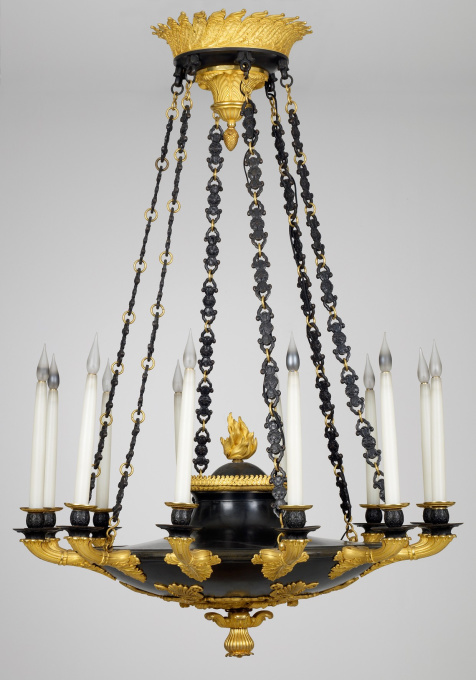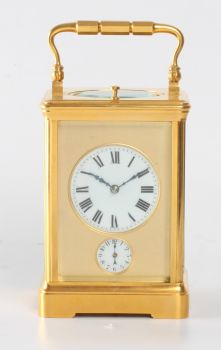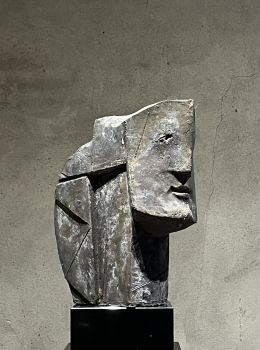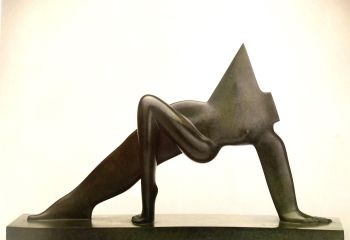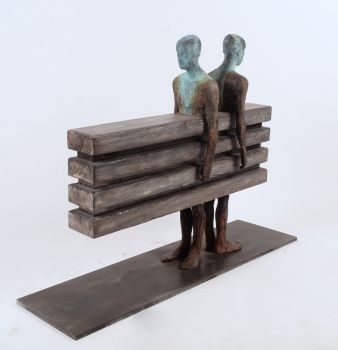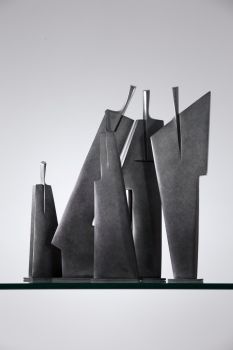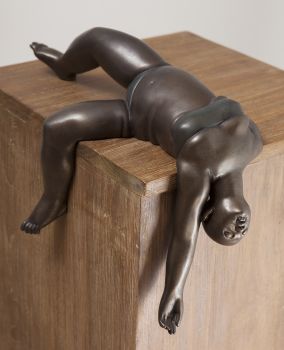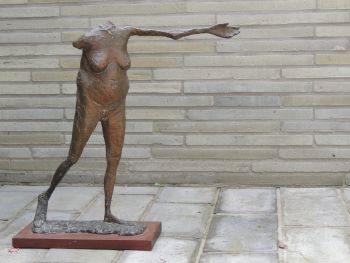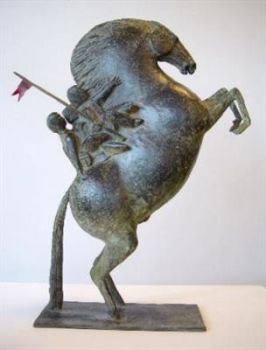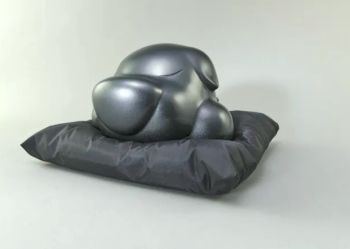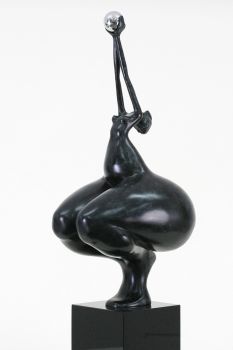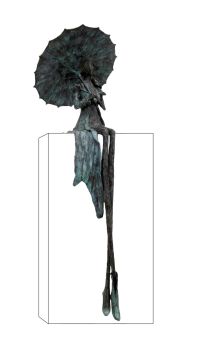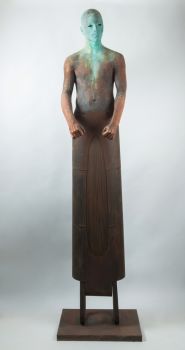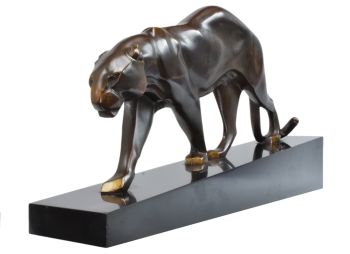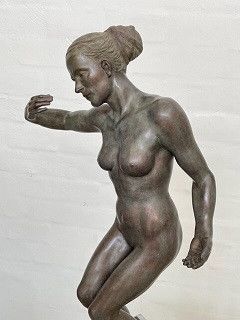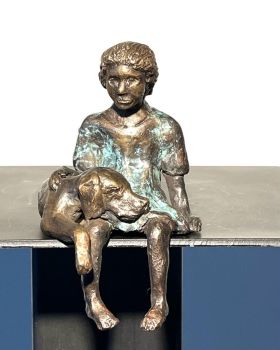Disc Shaped Chandelier 1805
Unknown artist
BronzeGoldMetalGilt
115 cm, ø 85 cm
Currently unavailable via Gallerease
- About the artworkThis twelve-light chandelier hangs from six patinated bronze chains. The chains consist of flower shapes that are connected with ormolu rings. The upper crown is decorated with a wreath of Acanthus and stylized flowerbuds. Hanging down a decorated ormolu cone shape that ends in a pinecone. The chains hang from six rings in the from of flowerbuds.
The large disc carries a censer with a gilded raised edge and a representation of a large flame. At the bottom a large ormolu bronze, richely decorated, rosette.
The twelve ormolu branches have the shape of acanthus stems that connect to the disc with their leafs. They end in patinated bronze candleholders and ormolu candle-rings.
The quality of the casting, as well as the chasing, is outstanding. Bronzes manufactured between 1800 and 1810 still had the excellent standard that was required by the Ancien Regime. The explanation for this is that the craftsmanship of the period before the Revolution was still present in the artisans that were educated in that period. - About the artist
It might happen that an artist or maker is unknown.
Some works are not to be determined by whom it is made or it is made by (a group of) craftsmen. Examples are statues from the Ancient Time, furniture, mirroirs, or signatures that are not clear or readible but as well some works are not signed at all.
As well you can find the following description:
•“Attributed to ….” In their opinion probably a work by the artist, at least in part
•“Studio of ….” or “Workshop of” In their opinion a work executed in the studio or workshop of the artist, possibly under his supervision
•“Circle of ….” In their opinion a work of the period of the artist showing his influence, closely associated with the artist but not necessarily his pupil
•“Style of ….” or “Follower of ….” In their opinion a work executed in the artist’s style but not necessarily by a pupil; may be contemporary or nearly contemporary
•“Manner of ….” In their opinion a work in the style of the artist but of a later date
•“After ….” In their opinion a copy (of any date) of a work of the artist
•“Signed…”, “Dated….” or “Inscribed” In their opinion the work has been signed/dated/inscribed by the artist. The addition of a question mark indicates an element of doubt
•"With signature ….”, “With date ….”, “With inscription….” or “Bears signature/date/inscription” in their opinion the signature/ date/ inscription has been added by someone other than the artist
Artwork details
Related artworks
Unknown artist
A SMALL IVORY NETSUKE OF A DUTCHMAN WITH A DRUM1750 - 1800
Price on requestZebregs & Röell - Fine Art - Antiques
1 - 4 / 12Unknown artist
18th Century Diamond Bracelet with 2000-year-old Intaglios1790
€ 23.000Adin Fine Antique Jewellery
 Curated by
Curated byDanny Bree
Unknown artist
Set Franse Empire Pendules / Empire Lectura penduleearly 19th
Price on requestKuipers Kunst & Antiek
1 - 4 / 15Unknown artist
Japanese transition-style lacquer coffer 1640 - 1650
Price on requestZebregs & Röell - Fine Art - Antiques
1 - 4 / 24- 1 - 4 / 24

